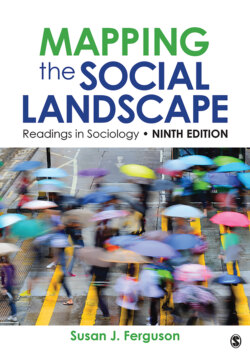Читать книгу Mapping the Social Landscape - Группа авторов - Страница 18
На сайте Литреса книга снята с продажи.
Historical Background
ОглавлениеAfter the Mexican–American War, Mexicans were given the option to maintain their Mexican citizenship and leave the country or become U.S. citizens. Many reluctantly chose the latter in order to keep their homes. Although the Treaty of Guadalupe Hidalgo was supposed to guarantee land grant provisions to those who chose to remain in occupied territory, legal and illegal maneuvers were used to eliminate communal usage of land and natural resources. Between 1854 and 1930, an estimated 2,000,000 acres of private land and 1,700,000 acres of communal land were lost.8 In the arid Southwest, small plots were insufficient to continue a subsistence-based farming economy, thus the members of the Hispano community were transformed from landowners to wage laborers. Enclosure of the common lands forced Mexicans from their former economic roles, “freed” Mexicans for wage labor, and established a racially stratified labor force in the Southwest.
As early as 1900, the Hispano farming and ranching communities of northern New Mexico and southern Colorado began to lose their population. A combination of push-pull factors conspired to force rural Hispanos off the land and attracted them to urban areas like Denver. Rural northern New Mexico and southern Colorado experienced drastic depopulation as adults left to find jobs. During the Depression, studies conducted in cooperation with the Works Progress Administration (WPA) noted the desperate situation:
The Tewa Basin Study by the U.S. Department of Agriculture showed that in 11 Spanish-American villages containing 1,202 families, an average of 1,110 men went out of the villages to work for some part of each year prior to 1930. In 1934, only 157 men out of 1,202 families had found outside work.9
Migration in search of jobs became a way of life for many families. New Mexicans and southern Coloradans joined the migratory farm labor stream from Texas, California, and Mexico. World War II further depopulated the rural villages as people flocked to the cities in response to job openings in defense plants and related industries. Postwar migration from New Mexico was estimated to be one-fifth of the 1940 rural Chicano population.10 This pattern continued in the following decades. For instance, Thomas Malone found that during the decade of the 1950s, only one of seven northern counties in New Mexico had not experienced a decrease in its former predominantly Spanish-speaking population.11 By 1960, 61 percent of the population had been urbanized,12 and between 1950 and 1960, an additional 24 percent left their rural communities.13
Perhaps because research on population movement among Chicanos has been so overwhelmingly concerned with emigration from Mexico, this type of internal population movement among Chicanos has not been well studied. What research is available has focused primarily on male workers and the relationship between urbanization and acculturation.14 Chicanas have been either ignored or treated simply as family members—mothers, daughters, or wives, accompanying male relatives in search of work—rather than as wage earners in their own right. Nevertheless, for many women migration to an urban area made it necessary that they enter the labor market. Domestic service became a significant occupation in the experience.
